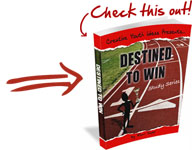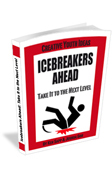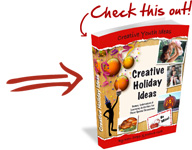
Description
This icebreaker is appropriate during the Olympics or for special sports events.
Preparation
On small slips of paper write down the names of numerous athletes. (Best if they are the more prominent athletes from the Olympic Games or the more famous athletes from a variety of sports.)
What to do
- Tape the names of Olympic athletes to the back of students as they arrive.
- The task of the students is to discover which Olympic athlete’s name is pinned on their backs by asking only “yes” or “no” questions.
- This continues until everyone arrives and has learned the name of the famous Olympic athlete on his/her back.
- Then go around the group and ask each youth their name, favorite Olympic sport, and other information you might like to know.
Famous Olympic Athletes
Here’s a few well known Olympic athletes to get you started
- Bruce Jenner – Track and Field
- Carl Lewis – Track and Field
- Dorothy Hamill – Figure Skating
- Edwin Moses – Track and Field
- Eric Heiden – Speed Skating
- Ian Thorpe – Swimming
- Jesse Owens – Track and Field
- Jim Thorpe – Track and Field
- Lance Armstrong – Cycling
- Mark Spitz – Swimming
- Mary Lou Retton – Gymnastics
- Michael Phelps – Swimming
- Muhammed Ali – Boxing
- Nadia Comaneci – Gymnastics
- Usain Bolt – Track and Field
Keen to use some of the most promising Athlete from the 2012 Olympic Games in London?
Here’s a list of the top 2012 Olympic Athletes to Watch
![]()

Go for the Gold
Need an evangelistic Youth Camp/ Bible Study Series with an Olympic Theme?
What is salvation all about? What does it mean to be saved? This sports themed Bible Study / Camp Curriculum uses the Olympic Flag to introduce the concepts of sin (black circle), forgiveness (red circle), purity (white background), spiritual growth (green circle), heaven (Yellow Circle) and (Baptism) blue circle.
-> Tell me about “Go for the Gold”
![]()
 Destined to Win
Destined to Win
Need a Youth Camp/ Bible Study Series on “Running the Christian Race”?
The race as a metaphor for the Christian life is used in several places in the Bible. This series is a great follow up for new Christians or to re-emphasize the basics of our spiritual Journey in the Faith. This Bible Study / Camp Curriculum has a sports theme and is great for athletes as well as a tie in to the youth Olympic Games.
->Tell me about “Destined to Win”


